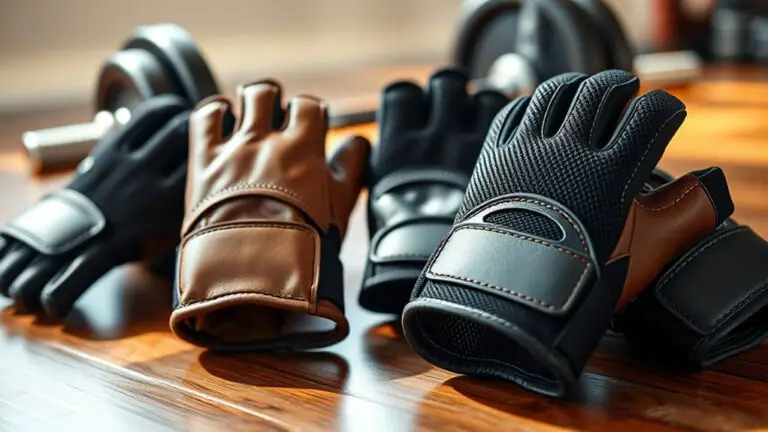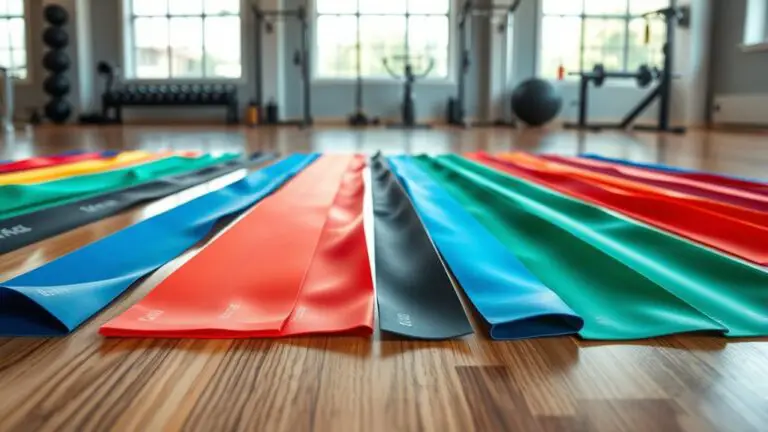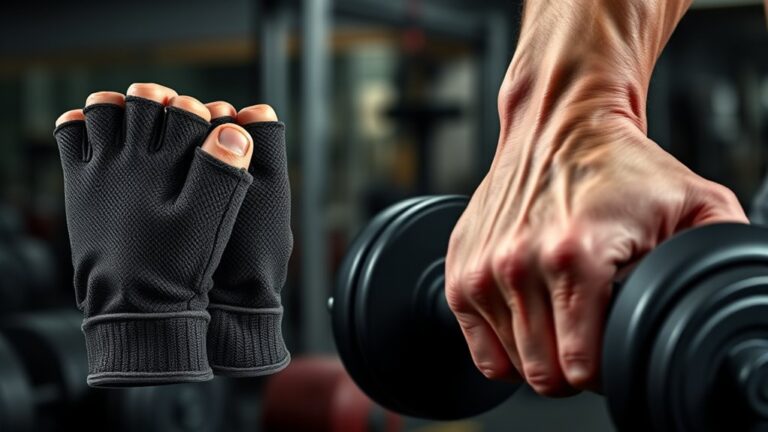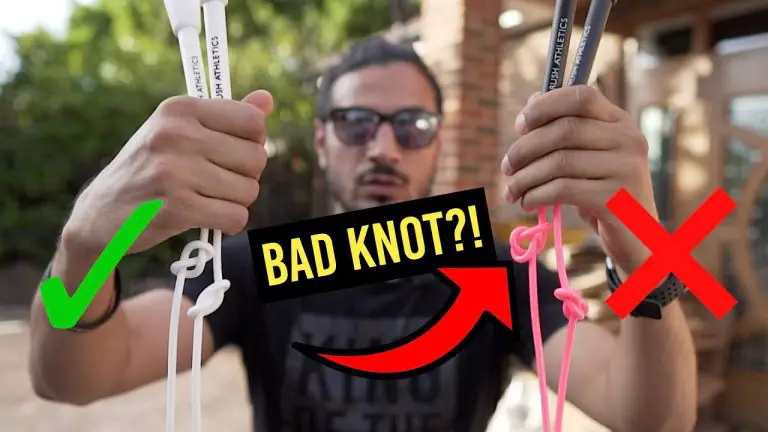Skipping Rope Selection: How to Choose Skipping Rope

When it comes to choosing a skipping rope, there are many factors to consider. The most important factor is the material the rope is made from. The three most popular materials are nylon, leather, and plastic.
Each has its own advantages and disadvantages. Nylon ropes are the lightest and easiest to use, but they wear out quickly. Leather ropes are heavier and take more effort to use, but they last much longer.
Plastic ropes are in between nylon and leather in terms of weight and durability. Another important factor to consider is the length of the rope. Ropes come in a variety of lengths, so it’s important to choose one that’s appropriate for your height.
If you’re taller than average, you’ll need a longer rope; if you’re shorter than average, you’ll need a shorter rope. Finally, don’t forget to take into account the type of handles you prefer.
- There are a few things to consider when choosing a skipping rope: 1
- Length – The skipping rope should be the right length for your height
- To determine this, stand on the middle of the rope and pull the handles up to your armpits
- If the rope is too long, it will be difficult to control
- If it’s too short, you’ll have to hunch over or jump too high
- Weight – A heavier rope will rotate slower and is better for beginners or those wanting a more gentle workout
- A lighter rope will rotate faster and is better for advanced jumpers or those looking for a more intense cardio workout
- Material – Skipping ropes can be made from different materials such as plastic, cloth, leather, or even metal cables
- Choose one that feels comfortable in your hands and won’t slip when you start sweating
How to Choose Skipping Rope Length
When it comes to choosing the right length for your skipping rope, there are a few things to consider. The first is your height. The second is how you will be using the rope (for instance, for double unders or other tricks).
And the third is personal preference.
Here are some general guidelines:
If you are under 4’9”, we recommend a 7’6” rope.
If you are between 4’9” and 5’3”, we recommend an 8 foot rope.
If you are between 5’3 and 5’11”, we recommend a 9 foot rope. If you plan on doing any advanced jumps or tricks, get the 9 footer so you have plenty of slack.
And if you are over 6 feet tall, we recommend a 10 foot rope.
To determine the perfect length for YOU , take the following steps:
1) Stand in the middle of the skipping rope with both feet together.
2) Pull handles up overhead until ropes meet above your head .
3) Cross arms in front of chest and hold onto opposite ends of each handle .
4) Rope should reach armpits – if it doesn’t , it’s too short !
If it extends much past your armpits , it’s too long .
Best Material for Jump Rope
When it comes to finding the best material for your jump rope, there are a few things you’ll want to keep in mind. The first is the weight of the rope. You’ll want to find a rope that’s light enough to swing easily, but not so light that it doesn’t offer any resistance.
The second thing to consider is the material the rope is made from. Jump ropes can be made from a variety of materials, including plastic, nylon, and even leather. Each material has its own advantages and disadvantages, so you’ll need to decide which one is right for you.
Finally, you’ll need to think about the length of the rope. Again, this will come down to personal preference. Some people prefer longer ropes while others find shorter ones easier to use.
Ultimately, it’s up to you to experiment and see what works best for you.
Best Type of Skipping Rope
There are many factors to consider when choosing a skipping rope, including the type of rope, the length of the rope, and the weight of the rope. The best type of skipping rope for you will depend on your individual needs and preferences.
If you are looking for a basic skipping rope for casual use, a plastic or nylon rope is a good option.
These ropes are lightweight and easy to use, making them ideal for beginners. However, they can be more difficult to control than heavier ropes, so if you want to skip with more precision, you may prefer a metal or leather rope.
Metal and leather ropes are also good choices for more advanced skippers who want greater control over their skipping.
These ropes are usually heavier than plastic or nylon ropes, which makes them more challenging to use but also provides more resistance for a better workout. If you plan to use your skipping rope for fitness purposes, choose a heavy-duty option that can withstand extensive wear and tear.
The length of your skipping rope is also important to consider.
If you are tall, you will need a longer rope than someone who is shorter. Most standard skipping ropes are 10 feet long, but you can find longer options if needed. It is also important to make sure that the handles on your chosen skipping rope are comfortable to grip and won’t slip out of your hands while jumping.
Once you have considered all of these factors, it’s time to decide on the best weight for your needs. Heavier ropes provide more resistance and can help tone your muscles as you skip; however, they can also be more difficult to control. If you are just starting out with skipping or prefer a lighter workout, choose a lightweight option such as a plastic or nylon rope.
As you become more experienced in using a skippingropesoarope.,you might want totryaheavierropefora tougherworkout..
Best Jump Rope for Beginners
If you’re looking for the best jump rope for beginners, there are a few things you should keep in mind. First, you’ll want to find a rope that is the right length for you. Second, you’ll want to choose a rope that is made of durable materials so it will last through your early days of learning.
And finally, you’ll want to pick a rope with comfortable handles so you can keep jumping without pain or discomfort.
The length of your jump rope is important because if it’s too long, it will get tangled easily and be difficult to use. Conversely, if it’s too short, you won’t be able to get the full range of motion needed for jumping.
A good rule of thumb is to choose a rope that reaches from your armpits to just below your waist when held in front of you.
As far as material goes, look for something sturdy like nylon or leather. These materials will hold up well against wear and tear and won’t break easily like some cheaper options out there.
Finally, comfort is key when picking out a jump rope for beginners. You don’t want handles that are too small or slippery because they can cause pain or lead to injuries. Instead, look for foam-covered handles that fit snugly in your hand but aren’t overly tight.
This way, you can focus on perfecting your technique without having to worry about losing grip on the rope mid-jump!
How to Jump Rope
Jumping rope is not only a great way to get some exercise, but it’s also a lot of fun! Here are some tips on how to jump rope like a pro:
1. Start with the basic bounce.
This is the most basic jump and is perfect for beginners. To do this, simply hop over the rope as it comes around your body. Keep your feet close together and your knees slightly bent.
2. Once you’ve mastered the basic bounce, try adding in some double unders. This means that you’ll need to jump twice for each revolution of the rope. It takes a bit of practice to get the timing down, but it’s well worth it once you do!
3. For an extra challenge, try jumping on one foot at a time. This is great for improving balance and coordination. Simply alternate which foot you lead with as you jump over the rope.
4. If you really want to up the ante, try doing some tricks! There are all sorts of cool jumps that you can learn, from turning 360 degrees in the air to crossing your arms in front of your body mid-jump. Just search online for “jump rope tricks” and see what you can come up with!
What Type of Skipping Rope is Best?
While there are many types of skipping ropes to choose from, the best type of skipping rope will depend on your individual needs and preferences. If you are a beginner, it is best to start with a simple plastic or cloth rope. Once you have mastered the basic techniques, you can move on to more advanced ropes made of materials such as leather or steel.
For competitive jumpers, a heavier rope made of steel or another sturdy material is often used. No matter what type of rope you choose, be sure to practice with it before using it in competition or other high-pressure situations.
How Do I Find the Right Skipping Rope?
When most people think of a skipping rope, they picture the long, thin rope used for schoolchildren’s games or for exercise in a gym. However, there are many different types and sizes of skipping ropes available on the market today. The right skipping rope for you depends on your individual fitness goals and preferences.
If you are looking for a skipping rope to use as part of your cardiovascular workout, then you will want to choose a light rope that is easy to handle. For a more intense workout, a heavier rope may be more suitable. If you have joint problems or limited space in which to exercise, then an adjustable-length rope may be the best option.
If you are using a skipping rope as part of your strength training program, then you will want to select a heavier rope that provides resistance when swung. This type of skipping rope is often used by boxers and other athletes who need to build up their arm and shoulder muscles. Once you have decided on the type of skipping rope that is right for you, it is important to choose one that is the correct size.
If the skipping rope is too long or too short, it will be difficult to use and can result in injuries. To determine the proper length, stand in the middle of the skipping rope and allow both handles to come up to your armpits. The handles should not extend any further than your armpits; if they do, the skipping rope is too long.
If the handles do not reach your armpits, then the skipping rope is too short.
Which Skipping Rope is Best for Beginners?
There are a lot of factors to consider when choosing a skipping rope, but if you’re a beginner, the two most important things to look for are length and weight.
The length of the rope should be based on your height – the general rule is that the rope should be about as long as your arm span. To measure this, hold the end of the rope in one hand and stretch it outwards until it’s taut.
If the end of the rope reaches your armpit, it’s the perfect length.
As for weight, you want to look for a rope that’s light enough to be easy to swing but heavy enough to have some momentum behind it. A good starting point is a rope that weighs around half a pound.
Once you’ve found a skipping rope that meets these criteria, you can start practicing! Begin by standing on the middle of the rope and swinging it over your head. Keep your arms straight and let the momentum of the rope do most of the work – resist any temptation to start whipping your arms around like crazy!
As you get more comfortable with jumping, you can start experimenting with different techniques. You can try alternating your feet (jumping off your left foot then your right foot then left foot again), or see how long you can jump without stopping (a great way to build endurance).
What Weight Skipping Rope Should I Get?
When it comes to choosing a skipping rope, the weight of the rope is an important factor to consider. A heavier rope will be more challenging to use and will help you burn more calories, while a lighter rope is better for beginners or those looking for an easier workout.
So, what weight skipping rope should you get?
It really depends on your fitness level and goals. If you’re just starting out, a light rope (around 0.5-1 lbs) may be best. As you become more experienced, you can move up to a heavier rope (1-2 lbs).
And if you’re looking for a real challenge, try a weighted rope (2+ lbs).
Conclusion
If you’re looking for a great workout, you can’t go wrong with skipping rope. Follow above tips to choose the perfect one for your regular excercises!





